Peter Clifton Finds His Lost Easybeats Film
posted June 20, 2010 8 Comments
![]()
{Click on an image to expand}
At the beginning of his career in making films about music, Australian director and producer Peter Clifton created a documentary about the 1967 tour of England by The Easybeats, a fabled fivesome who put an Antipodean spin on the British Invasion bands of the era.
The Easybeats’ claims to fame include being the first Australian rock-and-roll group to score an international rock hit. They did that with their 1966 single “Friday on My Mind.” The band was an extraordinary force in Australian music, and the influence of its two leading figures, George Young and Harry Vanda, extended well beyond the Easybeats’ brief, meteoric career. Long before Young’s little brothers, Angus and Malcolm, starred in the stadium-rock faves, AC/DC, the Easybeats were the objects of Beatles-like fan hysteria. Then Young and Vanda went on to great success as Flash and the Pan (Grace Jones covered their “Walking in the Rain”), as producers of the first five AC/DC albums, and much else.
The huge success of “Friday on My Mind,” “She’s So Fine,” and other hits sent the Easybeats on a 1967 tour of England, which Clifton captured on his black-and-white Somewhere Between Heaven And Woolworths. But the 16mm film, produced for the Australian Broadcasting Corporation, was damaged before it was released. It was shelved and misplaced never to be seen by the public (and its director) until now.
Clifton says of the film, whose title the ABC rejected, along with the alternative Between Heaven and Hell, before agreeing to Easy Come Easy Go: “I have always hoped either the negative or the answer print would surface but had no idea it would be in San Francisco.” It was his first film, and he had put a huge amount of effort into it: “I was only 21 and alone in London and did everything from making up the sequences to working closely with Stevie, George, and to a lesser degree Harry.” He recalls vividly that the project entailed “hard work filming day and night, non-stop, for about four weeks, and travelling around grotty England with the lads.”
Back in Australia, he agreed to have it shown on the ABC’s network. But before that happened, he returned to London to make Now Time, a 13-part series on “swinging London.” But, he recalls, “when I returned to Sydney eight months later the 16mm color film and the master negatives had been lost by the ABC. At the time I was storing my films at Supreme Sound Studios. We searched high and low but never found it. The neg was damaged when the editors at Supreme Sound removed tape from the reels leaving a residue on the film that was printed into the answer print.”
Due to that damage, he says, “the ABC had an editor shorten the film without me as I had gone back to London.” The cuts amounted to 15 of the film’s 50 minutes. They were made from the only answer print that had been made, and it was that print from which the ABC cut the opening and closing titles sequences, and other segments.
That was 1967. In the following years, Clifton became a well-known director and producer of music-related films. In 1973 he directed The London Rock and Roll Show, a document of a 1972 Wembley Stadium festival. That was shortly before he inherited the Led Zeppelin film from Joe Massot, whom the band’s manager Peter Grant had released from the project.
He is best known for making the Led Zeppelin concert film The Song Remains the Same (1976), but has had a long and impressive career. (He also has had one other, far more famous experience of the discovery of lost films: In 2006, he discovered an extremely rare pristine 16mm copy of Neil Armstrong’s “one small step” onto the moon that it was hoped would provide clues to what happened to the many moon-landing tapes that NASA seems to have misplaced.)
Fast-forward four decades, during which Clifton never stopped searching for his Easybeats film. Last year, while preparing his book Vanda & Young: From the Easybeats to AC/DC (forthcoming August 2010), John Tait got in touch with Clifton to ask him about how the Easybeats film went missing. Clifton told him what he knew – little about the disappearance, and nothing about where the film might have got to – so Tait contacted the National Archives and National Film and Sound Archive in Australia, again to be disappointed.
Then Tait’s research partner, Mike Griffiths, did the modern thing and Googled. That told him that the film did still exist, after all: It had recently screened, in September 2009. That had occurred at a program presented by Oddball Films, the programming component of Oddball Film+Video, a San Francisco stock-footage company that can boast a collection of more than 50,000 16mm prints of animation, commercials, educationals, feature films, movie trailers, medical, industrial military, news out-takes, and films that defy genre. Pete Gowdy, who presents many evenings of rarely screened gems from Oddball’s collection, had not had to look far for Easy Come Easy Go. It was in Oddball’s archives. The night he showed it, he called the program “Friday on My Mind: Beat Group and British Invasion on Film.”
Clifton called Stephen Parr, Oddball’s director, who has a history in filmmaking about music, too. Says Parr: “I grew up listening to the music of the Easybeats and was familiar with Peter’s career, so it was an uplifting experience to speak with him and make arrangements for him to put this film back together.”
Parr can’t recall how he came by the film: “It appears as if we acquired the film in a lot of miscellaneous musical materials from an as-of-yet unknown collector.
“It wasn’t until Pete Gowdy, a musicologist and researcher, discovered this was a ‘lost’ film that we realized it might be the only copy in existence.”
For Parr, the discovery was not his first. Among rare and unusual films unearthed in his collection have been an Andy Warhol appearance at the Rhode Island School of Design in 1968 (screened at The Orphan Film Symposium in NYC in April 2010) and CinemaScope home movies of 1960s San Francisco that he donated to the San Francisco Media Archive.
Oddball has returned Easy Come Easy Go to Clifton, who is restoring it. He is raising funds for the restoration from several sources including the National Archives of Australia as well as members of AC/DC. (Legend has it that Angus Young, one of the two AC/DC brothers of the Easybeats’ George Young – he’s the one who wears the schoolboy shorts – was once trampled as a baby by a horde of screaming teenage Easybeats fans who stormed the Young family home).
Clifton has recovered some missing sections of the film that he will insert back into Easy Come, Easy Go, including an opening sequence filmed in Sydney and the band’s visit with Emperor Rosko (real name, Mike Pasternak), an American DJ then working at the pirate station, Radio Caroline, off the coast of England. (Richard Curtis tells the station’s story in fictionalized form in The Boat That Rocked, 2009, released in the US as Pirate Radio). Clifton got some of those segments from his feature “rockumentary” Popcorn (1969) starring Jimi Hendrix, Otis Redding, and Mick Jagger which opened the San Francisco Film Festival in 1970 and won many awards.
“I have re-mastered all the music and am getting close to raising the budget to restore the images,” says Clifton. “It will take a couple of months once the budget is in the bank.” He hopes to release the film, then, in all media, including on DVD. The National Film and Sound Archive of Australia will archive a copy.
Getting his film back has been akin to finding a lost child, Clifton says: “It was my first baby and I never stopped thinking about it and asking questions. I always felt that some part of the film would turn up.”
– Peter Monaghan
Previous Post: NZ Film Archive Unearths Early-Film Treasures
Next Post: Indiana University Seeks Cinema Technical Manager


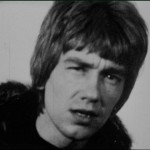
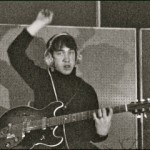


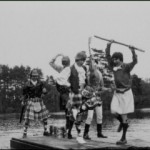

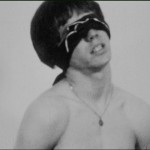
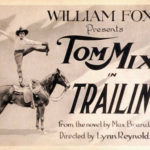
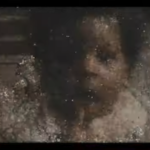
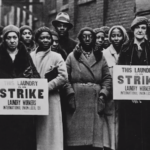
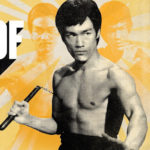
I am very excited to read this. I was thirteen in 1967, and was shopping one day in Carnaby Street with a friend. Lo and behold, suddenly the Easybeats appeared, with a film crew. We couldn’t believe our luck. Then a man approached us and handed us an autograph book each, saying he wanted us to run behind the Easybeats, waving the autograph books and screaming.
We were so excited to hear that we were in a film, but didn’t know what it was called and never saw it. I am wondering if we might be part of Peter Clifton’s lost film? If not, any suggestions?
My friend Sue and l were also there that day, and were filmed chasing Stevie, and George. Then we were filmed standing with the guys while they signed our autograph books. I was lucky enough to speak to Stevie while l was in Australia in 2009. He said he remembered being in Carnaby Street, but didn’t know what had happened to the film. I then contacted Oddball films, who found the film, and had an email back from Pete Gowdy. He said that on the bit of film he had seen, there were girls running down the street chasing them. Maybe one day we will get to see the film, and see if we are in it, or were left on the cutting room floor.
where can I see this film in Melbourne , where can I purchase the DVD ?
I’m afraid I don’t know that. Perhaps just try searching via title in online sales sites? – pm
hi there, we have produced a stage show about stevie and the easy’s.. we have seen peters footage and we have spoken to peter.. the film was shown at the recent sydney film festival. I asked peter if it was being released as a dvd. he said not just yet he is still working out the ebst way to do that.. we would love to sell the DVD at our shows… we have been touring NSW 2012.. the show is receiving standing ovations… try come and see it you wont be disappointed
I worked with Stevie in Australia and he often told me about some of his experiences including the Radio Caroline interview & Stones tour. I ended up DJ ing on Caroline just a couple of years later so I really look forward to buying a DVD or 2 or 3 for me & family / friends.Is it released yet?
Pete: Some leads here: http://www.smh.com.au/entertainment/movies/easybeats-film-46-years-on-too-easy-20130521-2jz1e.html
It was originally called “Somewhere Between Heaven and Woolworths” but premiered at the St Kilda Film Festival in 2013 as Easy Come Easy Go.